Document Set is a new feature introduced in SharePoint 2010 as part of content/document management. Document set helps to manage group of documents as a single entity. Actualy Document set is a content type that can be attached to any document library and make use of it's features.
Advantages of Document Sets
Consider a type "Project", each project has requirements document, project effort estimation spreadsheet, project plan presentation. To standardize the project management process, it's enforced to have all these documents for every project. In SharePoint 2007 it's not so easy to group different documents in same document library as each document is individual item. But this can be done within few minutes with Document sets feature. Documents sets will have Templates for each document, ie a predefined format document for review document, effort estimation, project plan presentation can be attached while defining this document set content type. Each library which uses this content type will get those document templates when user creates new document set.
Apart from these document sets can be versioned. It can have it's own customized Welcome page which is like home page for the project. Document Set content type basically inhertited from "Document" content type. Other content types also can be added if required. Workflows can be attached and few more options provided in SharePoint designer for document sets.
Advantages of Document Sets
Consider a type "Project", each project has requirements document, project effort estimation spreadsheet, project plan presentation. To standardize the project management process, it's enforced to have all these documents for every project. In SharePoint 2007 it's not so easy to group different documents in same document library as each document is individual item. But this can be done within few minutes with Document sets feature. Documents sets will have Templates for each document, ie a predefined format document for review document, effort estimation, project plan presentation can be attached while defining this document set content type. Each library which uses this content type will get those document templates when user creates new document set.
Apart from these document sets can be versioned. It can have it's own customized Welcome page which is like home page for the project. Document Set content type basically inhertited from "Document" content type. Other content types also can be added if required. Workflows can be attached and few more options provided in SharePoint designer for document sets.
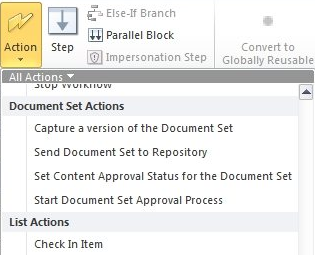
How to enable Document Sets?
Document sets by default won't be enabled in SharePoint 2010. It's a feature and has to be enabled manualy. Then document sets Content type has to be customized (if required). After that it can be attached to Document libraries. First keep all project document templates (Requirements document, Effort Estimation, Project Plan Presentation) ready.
- Login to SharePoint 2010 site -> Site settings -> Site Administration -> Site Collection Features -> Document Sets -> Activate.

- Site Settings -> Galleries -> Site Content types -> Document Set Content Types -> Document Set.

- Select Document Set Settings.
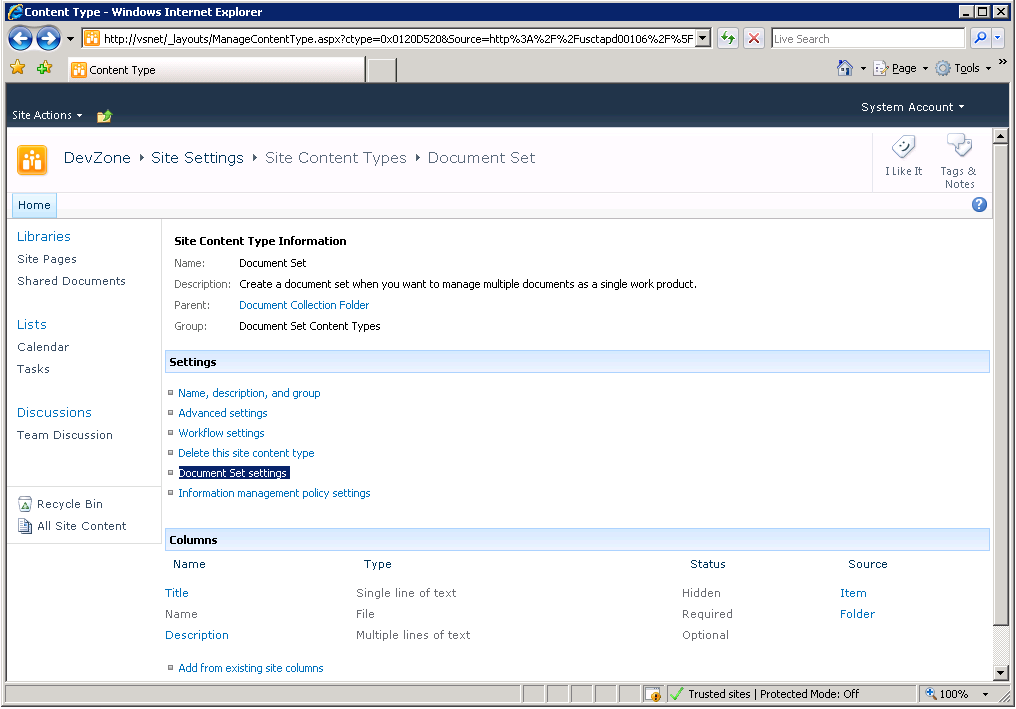
- Under Default Content section select the templates. Click "Add new default content" to select and upload more template documents.
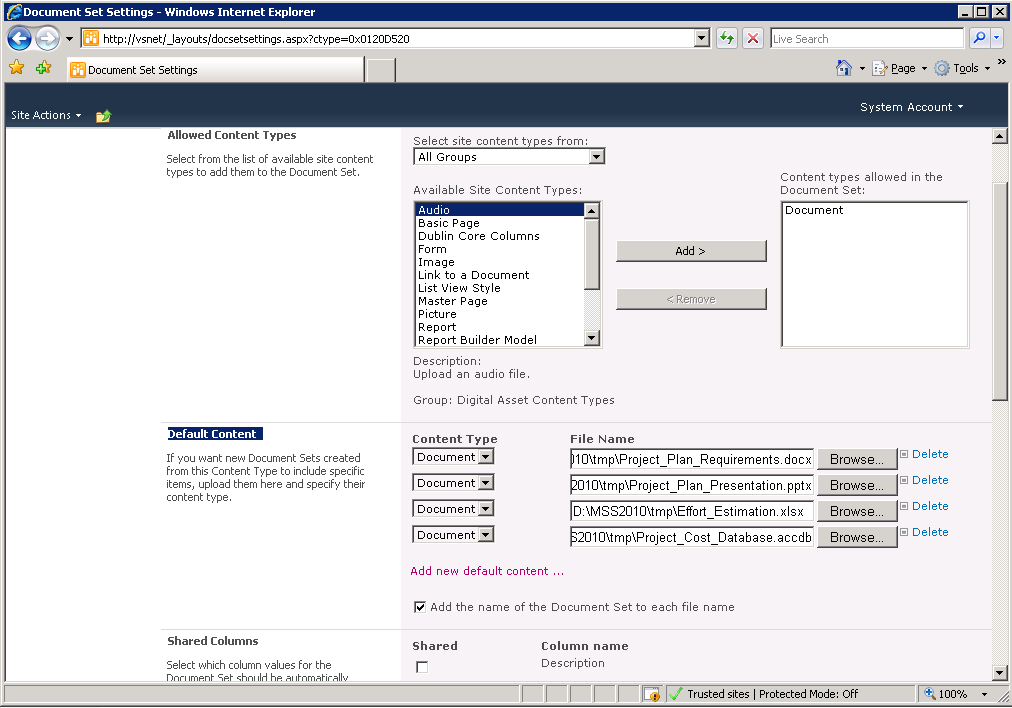
- Now we'll create new document library. If you want to attach to existing document library then skip this step.
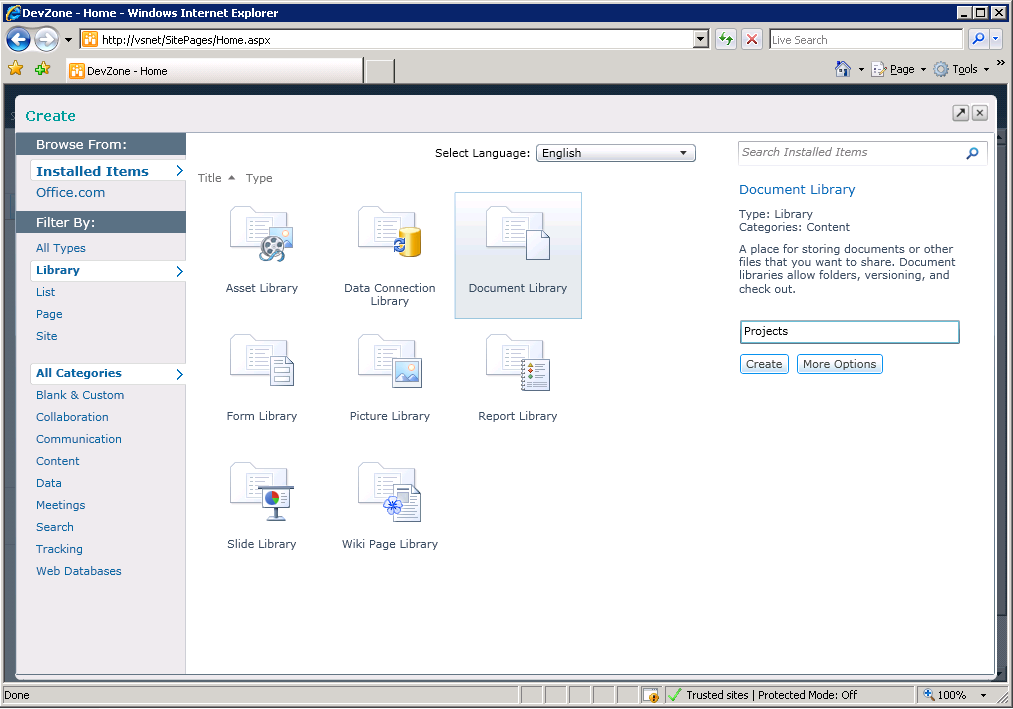
- Open the document library -> Library (Tab) -> Library Settings.
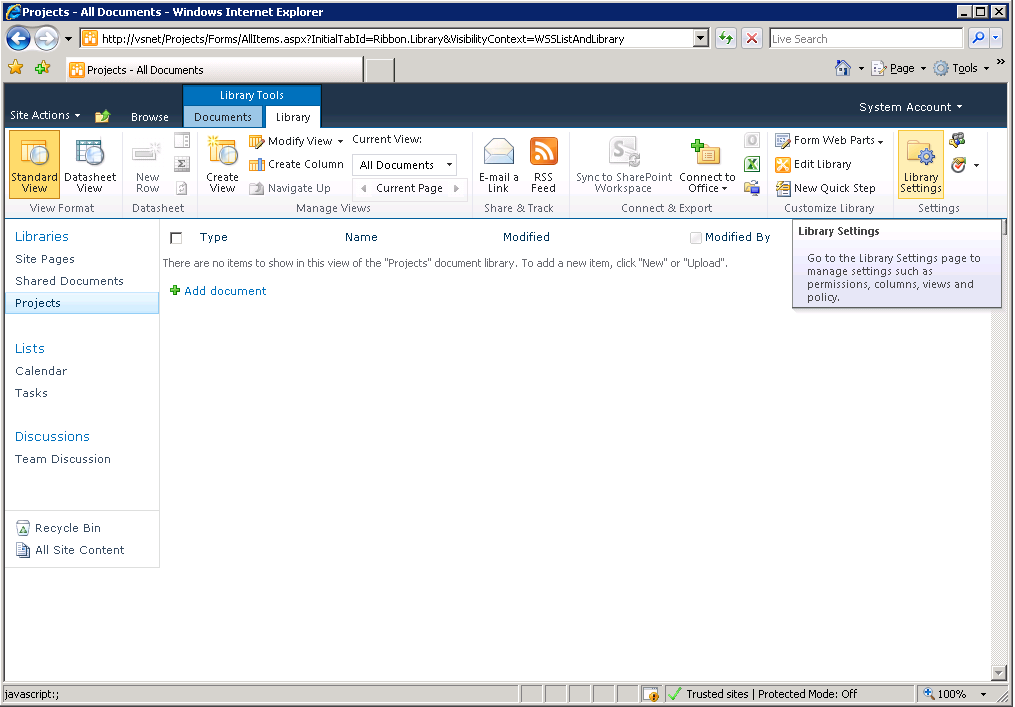
- Under General Settings select Advanced Settings. We need to enable allow management of content types setting.
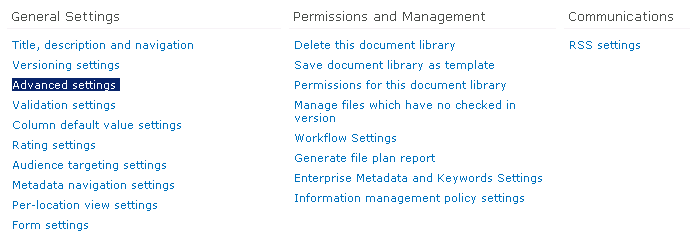
- Under Content types Select Yes for "Allow management of content types?" and save/Click Ok.
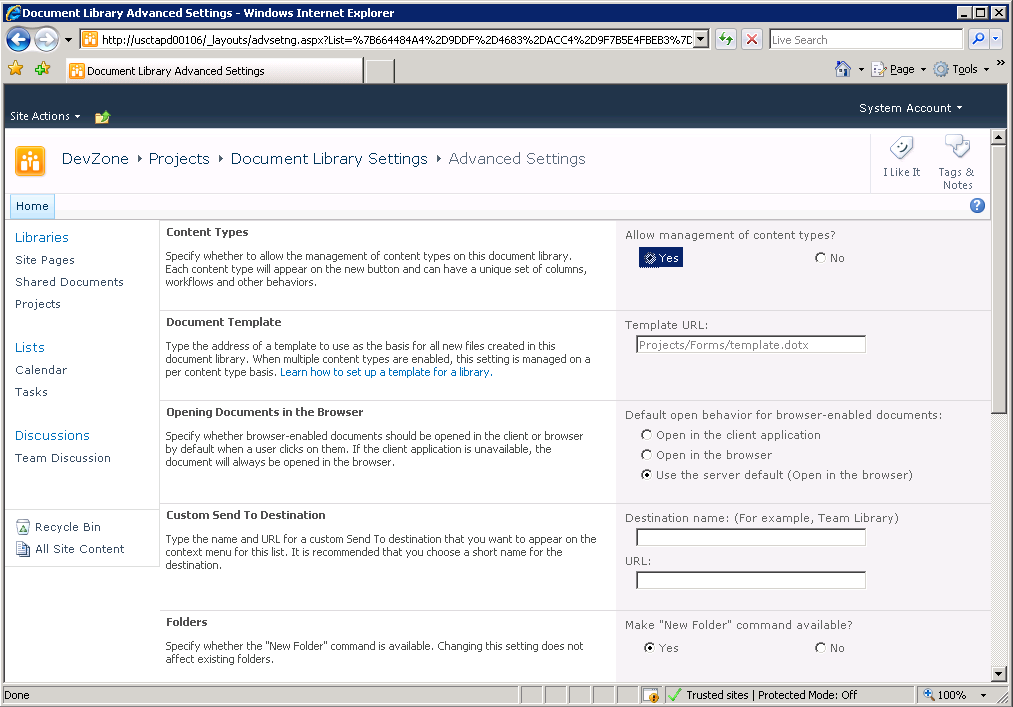
- Now in the library settings page Content types section will be shown. Select "Add from existing site content types".
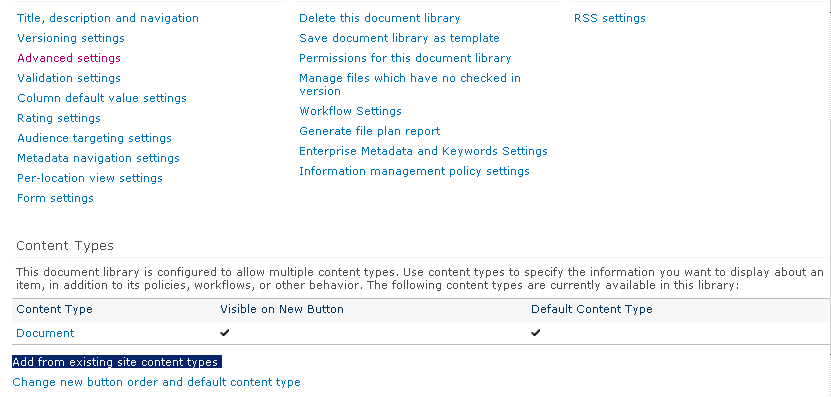
- Under "Select Content types" section select "Document Set" and Add. Now click Ok.
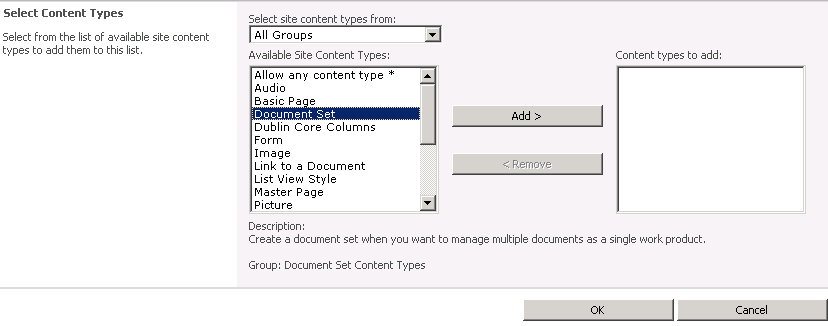
- In library settings -> Content types section -> Document sets -> Settings -> Name and description. Change name as "Project Plan".

- Open the document library -> Documents (Tab) -> New Document -> Project Plan.
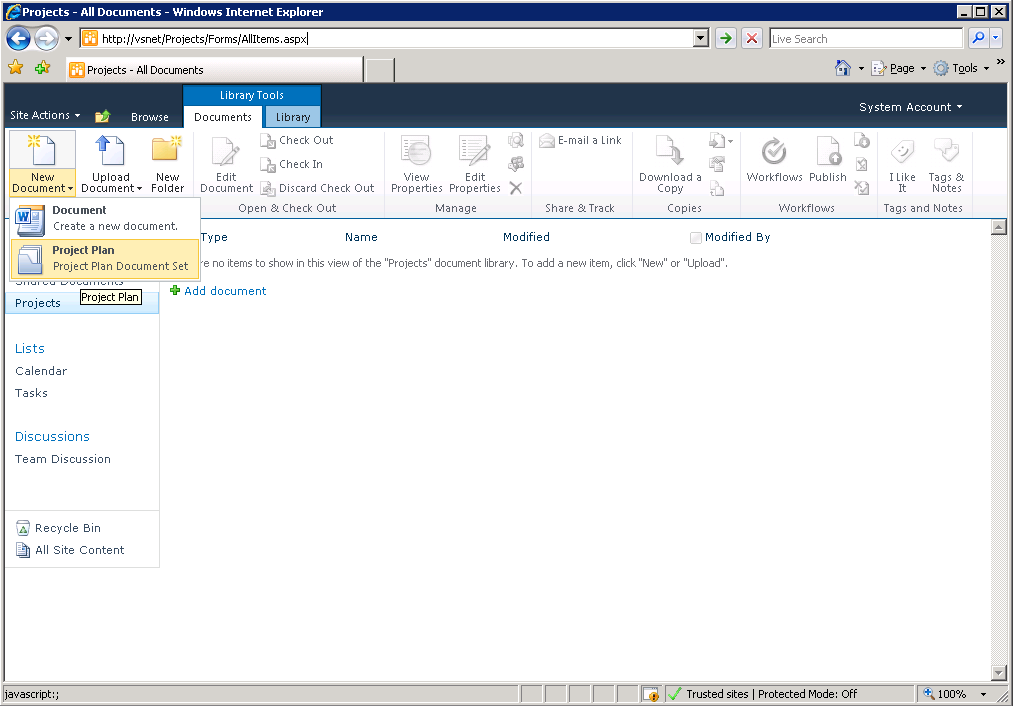
- Provide a project name for eg. "Aqua" -> Ok.
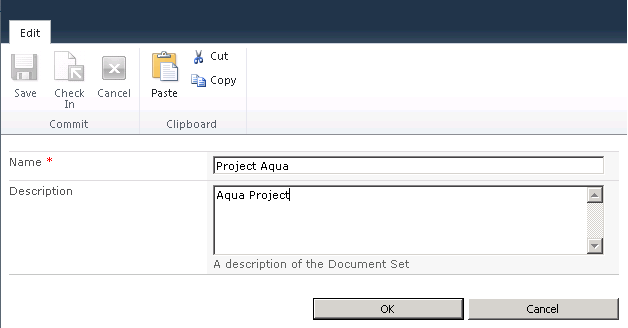
- Now a Project Plan Document set created with all default template documents. You'll be landed in Project Plan Welcome Page. :)
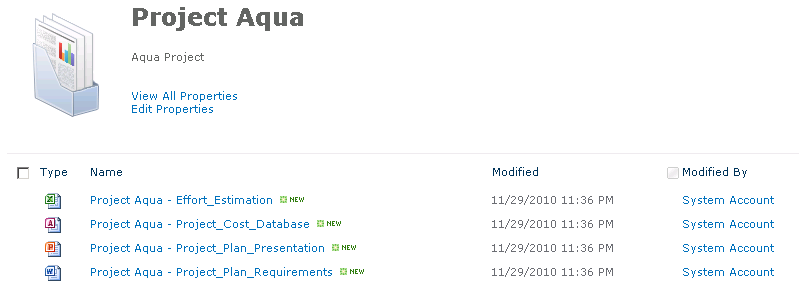
To change Welcome page and other settings, check Document Sets Content type settings.
Note: Document sets is feature of Microsoft SharePoint Server 2010 (MSS 2010) and won't be available on SharePoint Foundation 2010.
Note: Document sets is feature of Microsoft SharePoint Server 2010 (MSS 2010) and won't be available on SharePoint Foundation 2010.

No comments:
Post a Comment